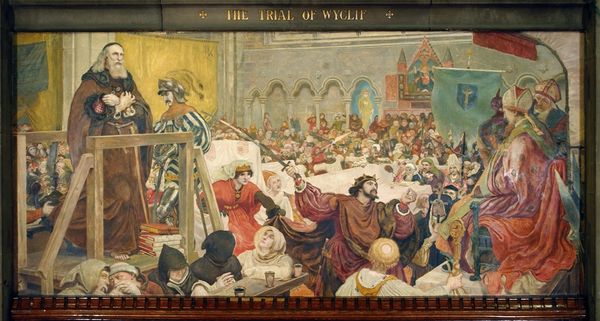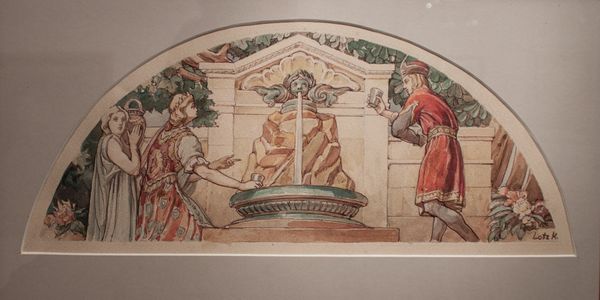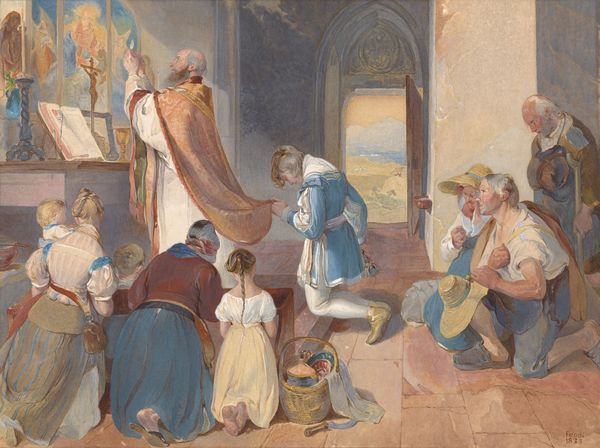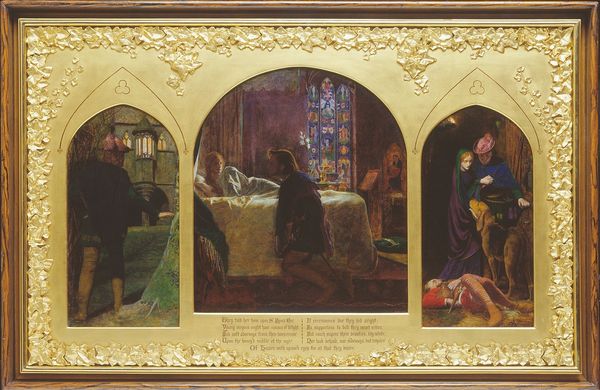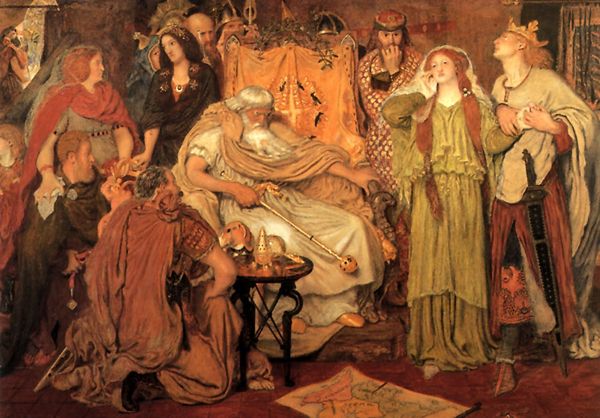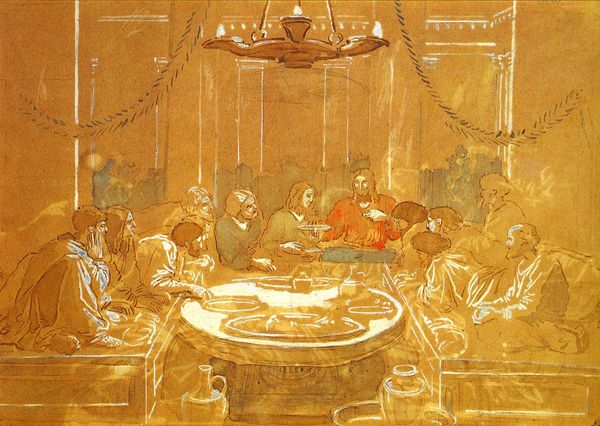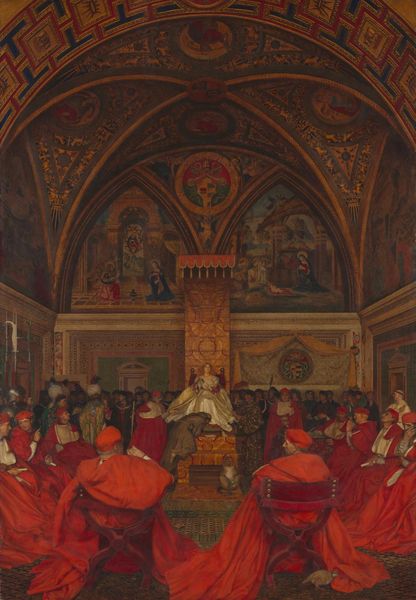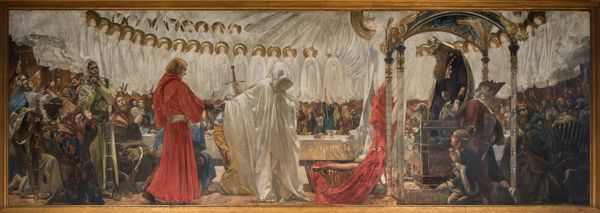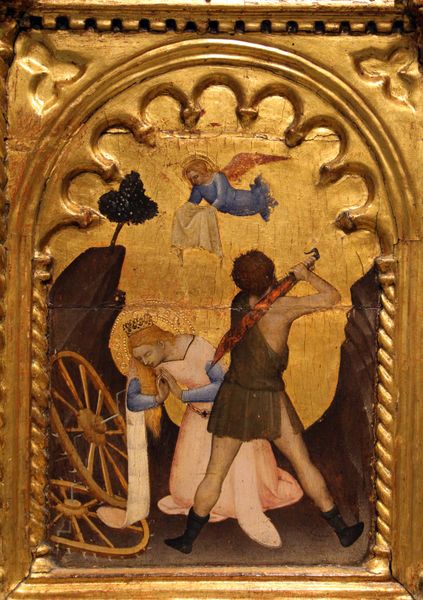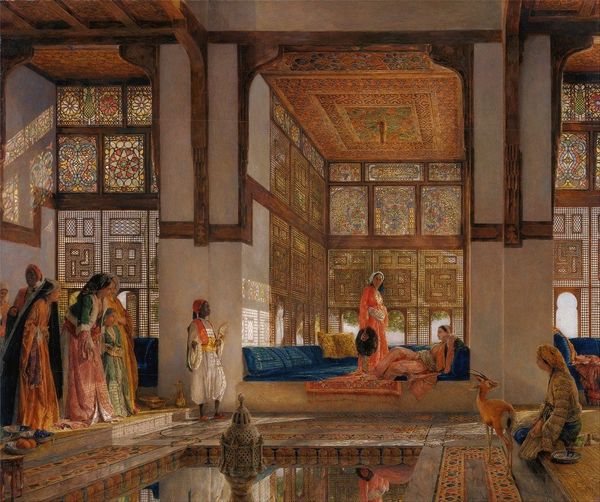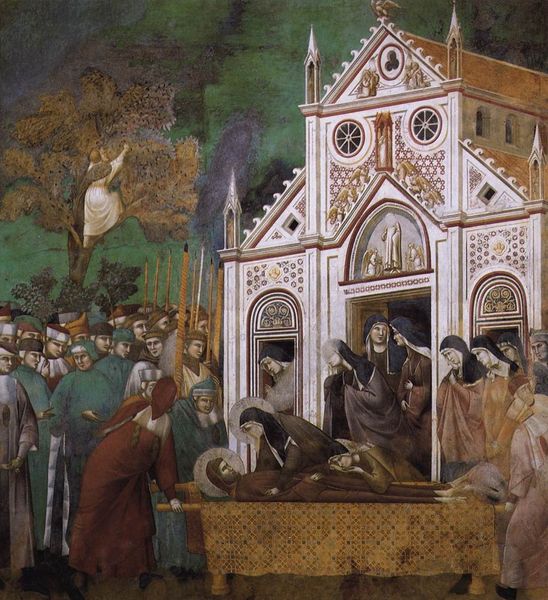
Cartoon for the Baptism of Edwin (c.585-633) King of Northumbria and Deira 1891
0:00
0:00
painting, textile, watercolor
#
water colours
#
painting
#
textile
#
oil painting
#
watercolor
#
history-painting
#
pre-raphaelites
#
watercolor
Dimensions: 126 x 57 cm
Copyright: Public domain
Curator: Here we have Ford Madox Brown’s “Cartoon for the Baptism of Edwin (c.585-633) King of Northumbria and Deira,” created in 1891, a watercolor and oil piece currently residing here at the National Gallery of Victoria. Editor: Immediately, I’m struck by the tapestry-like quality of the surface and the arrangement of the figures—almost frieze-like, compacted across the horizontal plane, yet spatially ambiguous in places. Curator: Right, this preparatory cartoon speaks volumes about Brown's Pre-Raphaelite interests in medieval history. The work presents the Christianization of Anglo-Saxon England as a pivotal political event, framing Edwin's conversion as instrumental for his kingdom. The emphasis on detail is incredible for a work intended for another medium. Editor: The details are indeed abundant. I find the texture fascinating; it looks as if Brown intentionally worked to deny the illusionism usually prized in painting. Note how the paint seems almost scrubbed into the fibers of the support, especially noticeable in the faces and the drapery. Curator: And it’s important to remember, this was conceived during the height of the Victorian era, a period deeply interested in legitimizing its own imperial project through grand historical narratives. Brown is very much placing Christianity as a civilizing force, with all the colonial implications that entails. Editor: Yet, isn’t there something unsettling in the color palette, or how the muted tones clash ever so slightly? It contributes to a certain discord, a sense of unease that undermines any straightforward narrative of triumph. Note too the rather cramped grouping to the left. Is there a formal tension mirroring cultural conflict? Curator: I think the ‘unease’ you detect speaks to a broader cultural anxiety present in late-Victorian Britain, a questioning of faith and progress. The composition is stage-like; the raised platform even calls attention to this public conversion as performative. Look closely to the crowd's faces behind; we see skepticism mingling with acceptance, which highlights the nuances within Edwin’s decision. Editor: Yes, “nuances” perfectly describes it! Looking again at the prostrate king’s abandoned crown, the painter uses the symbolic device and its formal qualities: the contrast of colors; muted earth tones against the brighter garments. Its composition suggests much deeper conflict and cultural assimilation than at first viewing. Curator: Absolutely. It underscores the complex negotiation of power, belief, and cultural identity that occurs during moments of religious conversion. Editor: So while the painting first comes across as an historic glorification of royalty and conversion, with deeper looking we are compelled to grapple with cultural undertones in this symbolic display. Curator: Indeed. And what Brown gives us is a window into both the Victorian imagination and the complexities of representing power dynamics within the past.
Comments
No comments
Be the first to comment and join the conversation on the ultimate creative platform.
